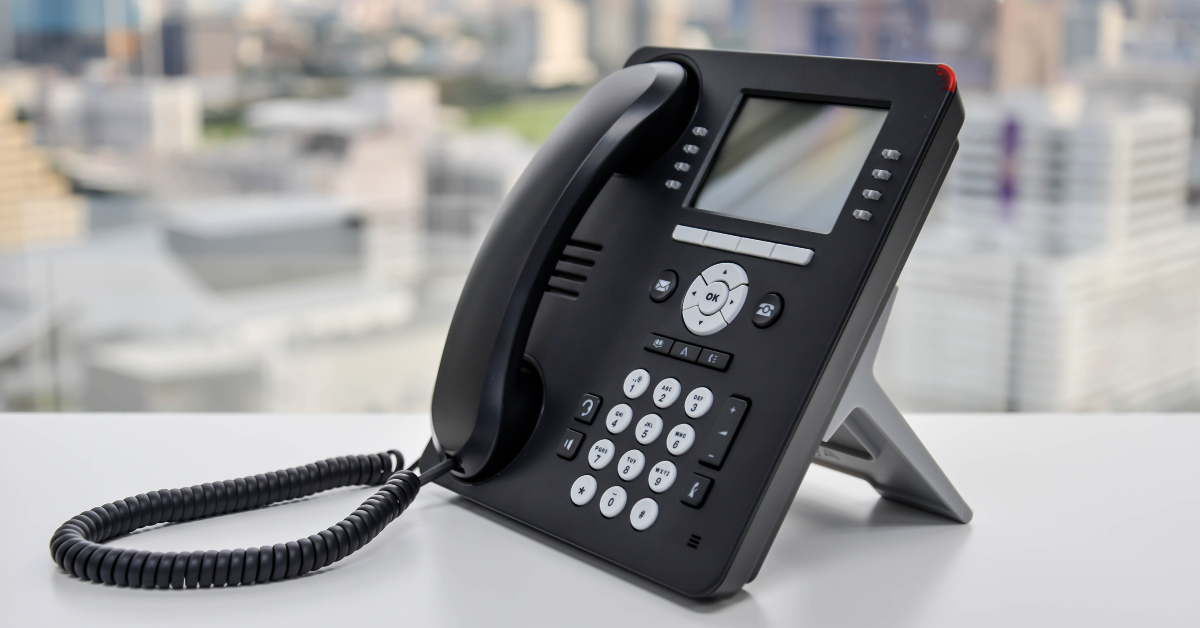-1.jpeg?width=600&name=GettyImages-1131901001%20(1)-1.jpeg)
Regardless of the industry you’re in, there’s one situation that’s universal: At some point, every business will encounter a dissatisfied customer, which is why consistently offering great customer service is so important.
Knowing what to say (and how and when to say it) is essential when you’re speaking with an irate customer on a call. The best customer service agents and call dispatchers can help quickly defuse a difficult conversation and keep even the most frustrated callers coming back to your business.
This article covers how to handle irate customers, with tips that can help guide your next conversation with an angry caller or customer.
5 Tips for Handling Calls with Angry Customers
Here are five tips for handling calls with frustrated, angry customers:
1. Start with a Script
It helps to start with a call script—or at least to have one nearby in case you’re stuck trying to figure out how to talk down a frustrated customer. Going into a difficult call as prepared as possible will help you relax and navigate the conversation. If your company has an irate-caller script for you to follow, it’s a good idea to memorize it and have a copy in front of you while taking calls.
If the company hasn’t provided a specific script for irate callers, try coming up with a list of go-to responses to common questions and issues.
For example, if a customer calls to complain about a field technician showing up late for a service appointment, you might say something like this:
I’m really sorry about that, and I completely understand your frustration. Although we strive for our technicians to stay on schedule, occasionally delays can occur. Your time and your business are valuable to us, so we appreciate your patience and that you brought this to our attention. Once the technician arrived, how was your service appointment? Were we able to resolve your issue?
2. Remain Calm
It’s easy to get defensive when you’re on the receiving end of an angry call, but it’s important to remain calm and professional throughout the conversation. Remember that it’s not personal, even if it feels that way from your end. Make sure to maintain a calm, polite tone and stay patient and even-tempered, even if the caller expresses their frustration. This will help set the stage for a positive conversation, even if the caller starts out frustrated at the beginning of the call.
3. Hear Them Out
It’s not only about offering a solution. Most of the time, angry customers just want to be heard and feel like someone cares about their experience. Let an irritated customer share their experience without interrupting at any point, but make sure you stay present. After you’ve heard them out, you’ll want to repeat the information in your own words to confirm you’ve been listening.
Active listening isn’t always easy, especially when someone is ranting about a complaint they have with your business. Although it may be tempting to zone out, active listening is essential in customer service. Improving your customer service listening skills starts with minimizing any distractions that might divert your focus so that you can give your undivided attention to the person who’s speaking.
4. Be Friendly
By maintaining a friendly, empathetic tone throughout a call with an irate customer, you can defuse the interaction and even turn it into a positive one. Friendly service is just as important to customers as convenience and conflict resolution. In a survey on the importance of the customer experience, 48 percent of U.S. consumers pointed to friendly, welcoming service “as uniquely defining success in an industry.”
Along with your tone of voice, smiling throughout the call can make a big difference as well—yes, even if the caller can’t see you in person. Believe it or not, just like a smile can reach your eyes (something that’s even more important these days!), it can also impact how you sound on the phone.
5. Find a Resolution
Always try your best to help the caller in some way, even if you can’t completely resolve their issue. Identifying a potential solution to the problem—or pointing the customer to someone who can offer assistance—will help you leave a good impression before ending the call.
Resolving customers’ concerns quickly will help set you apart from competitors and reduce churn. Research consistently shows that quick conflict resolutions can convince customers to stick with your business longer. In fact, 67 percent of customer churn could have been avoided if the business had resolved the customer’s issue during their first interaction.
Incorporating these tips into your business will go a long way when it comes to navigating intense and difficult customer complaints. Handling angry callers is never fun—but with the right approach and a solid script, you can turn the situation around and end on a positive note.




.png)

